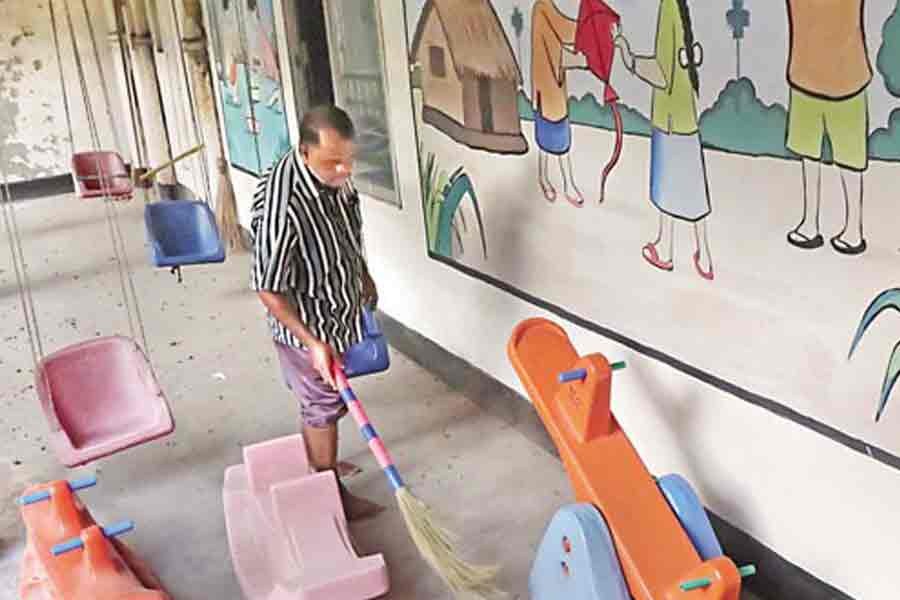
Published :
Updated :

The long and anxious wait of millions of students, their parents and guardians and teachers is about to end. Schools and colleges are likely to resume classes from September 12 after a long gap of nearly one and a half years. The declining trend in Covid-19 infections and fatalities during the past few weeks has prompted the government to reopen the educational institutions. A few departments of the University of Dhaka have held semester examinations lately through physical presence. Hopefully, all educational institutions would soon spring to life. Much would, however, depend on the behaviour of the deadly pathogen that has wreaked havoc across the world.
A high-level meeting scheduled for today (Sunday) at the Ministry of Education is to take a decision in detail on the reopening of the educational institutions. The resumption of educational activities might take place in a staggered manner as all eyes will remain focused on the state of Covid infections and fatalities. The technical committee comprising health experts, though vetted reopening of educational institutions, has suggested utmost caution in matters of safeguarding students from Covid infection.
Bangladesh is one of the few countries where educational institutions have remained closed for a long period. It is difficult to assess the extent of damage that the suspension of normal educational activities has caused to individual students in particular and the country's education in general. The authorities have tried to assess the financial damage the pandemic caused to mills and factories, but none has tried to do the same for the education sector. It is, thus, important for the students to go back to their classes physically like in the pre-pandemic days. This is necessary not only for learning but also for their psychological nourishment.
The issue is, however, quite tricky. The authorities of educational institutions will have to place particular emphasis on the health protocols to protect students from infections. Here, all educational institutions are not of the same standing and there is also a difference in the attitude of students, depending on their age and upbringing. All of the educational institutions do not have equal capacity to ensure safeguard-measures as mandated by the health authorities. The rural schools, in particular, might find it difficult to ensure the wearing of masks and hand sanitization.
The best way will be to allow a few students to attend classes for a day or two a week to make the maintenance of health protocols easier. Vaccinating students would have been the best solution. The government, too, appears to be eager to do that. But it might take some more time to reach that goal.
Undeniably, there are risks as far as the reopening of educational institutions is concerned. But it would be worth taking for the greater good of a generation. However, authorities must do their homework well on protecting the primary and secondary school students from Covid infection.
Another issue must not escape the attention of the relevant authorities. The pandemic has seriously affected the financial well-being of millions of families. Kids belonging to such families might avoid going to school, leading to a further rise in the dropout rate. It will be necessary to bring them back to the classes.


 For all latest news, follow The Financial Express Google News channel.
For all latest news, follow The Financial Express Google News channel.